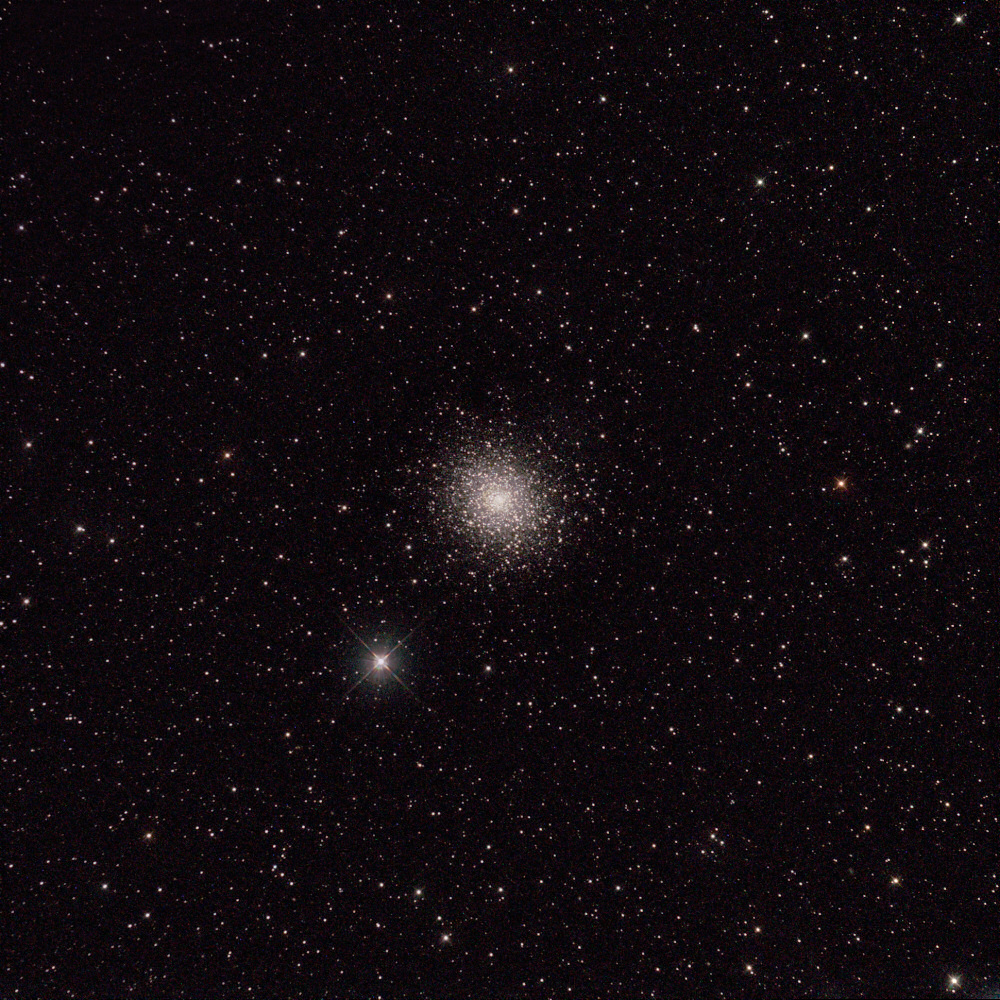
M5 is a bright globular cluster in Serpens Caput, indeed one of the showpieces for northern skies with an apparent brightness of 6.2 mag. Its apparent diameter is 23 arcminutes, corresponding to 165 light years, which makes it one of the larger globulars of our Galaxy. It is thought to be a bit older than the other Milky Way globular clusters, about 13 billion years. The distance to M5 is given as 24,500 light years. It has a compressed central core of 0.84 arcminutes angular diameter.
Exposure Data
Observing Hints
This globular cluster presents no challenge in find it. Starting at Beta Librae and moving the telescope about 10 degrees to the north, you will find a quadrangle of stars, shaped like a rhombus but with a few more stars nearby. M5 is located beside the northernmost of these stars and is recognizable without problems as a fuzzy ball near the star in any finderscope.
The brightest stars of M5 are only marginally dimmer than those of M13. The cluster begins to resolve into individual stars in a 4" refractor, most easily at the outer regions. A 6" reflector will show even more individual stars. Use magnifications of about 150x or 200x for the best visual impressions.
Globular clusters become really brilliant targets in bigger telescopes, from 10" upwards, their great light-gathering ability enables the observer to see hundreds of individual stars. And those who don't like globular clusters because they "all look the same" will easily be converted when they look at this one in an 18" reflector... :-)
Every deep-sky object is more fun to observe under dark and transparent skies, but stellar objects like the stars in a star cluster are also worth observing under not-so ideal condition in contrast to galaxies or nebulae, which tend to disappear when the background sky is too bright. But you should have at least a 6" telescope when observing star clusters under a hazy or light-polluted sky.